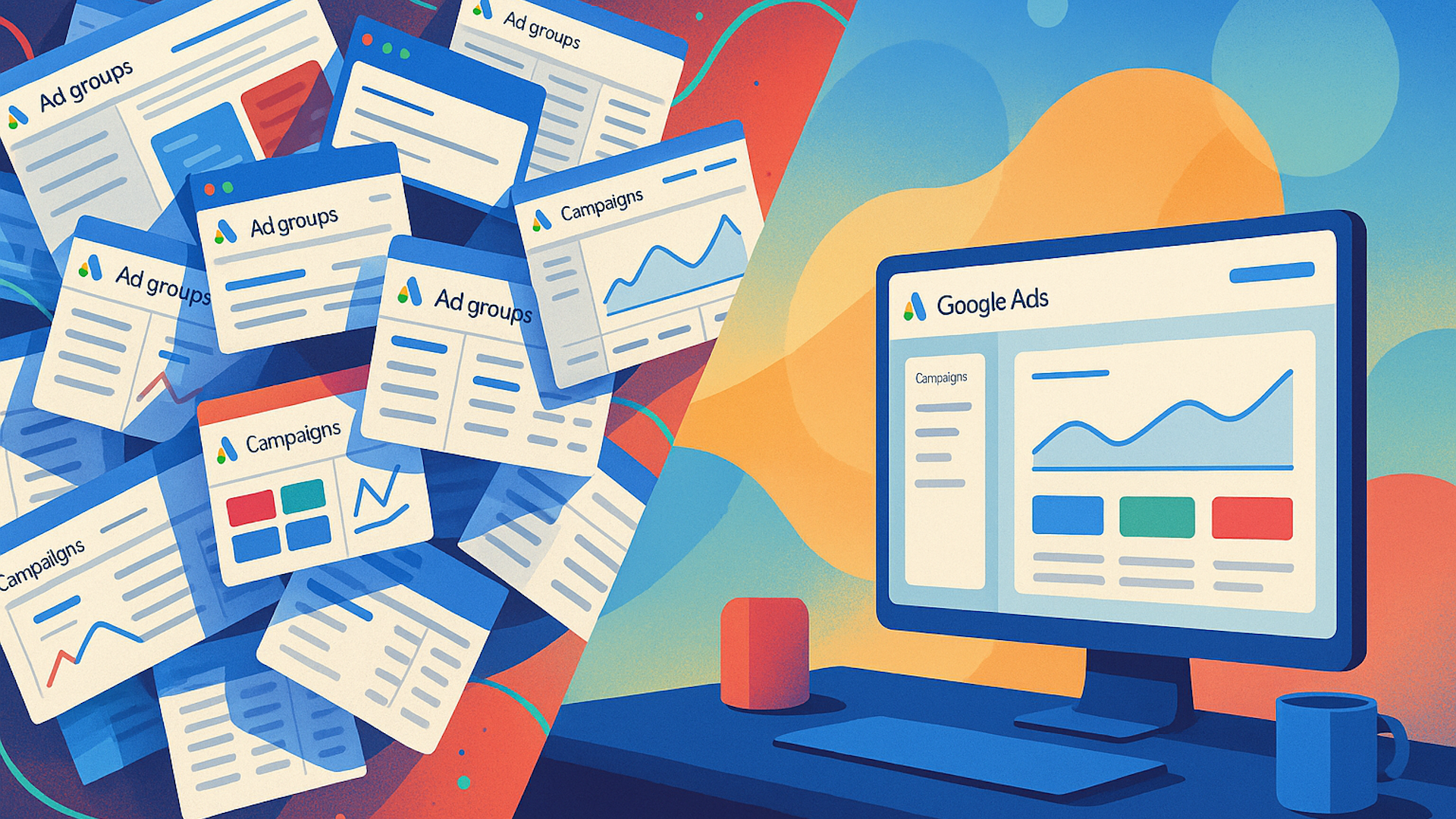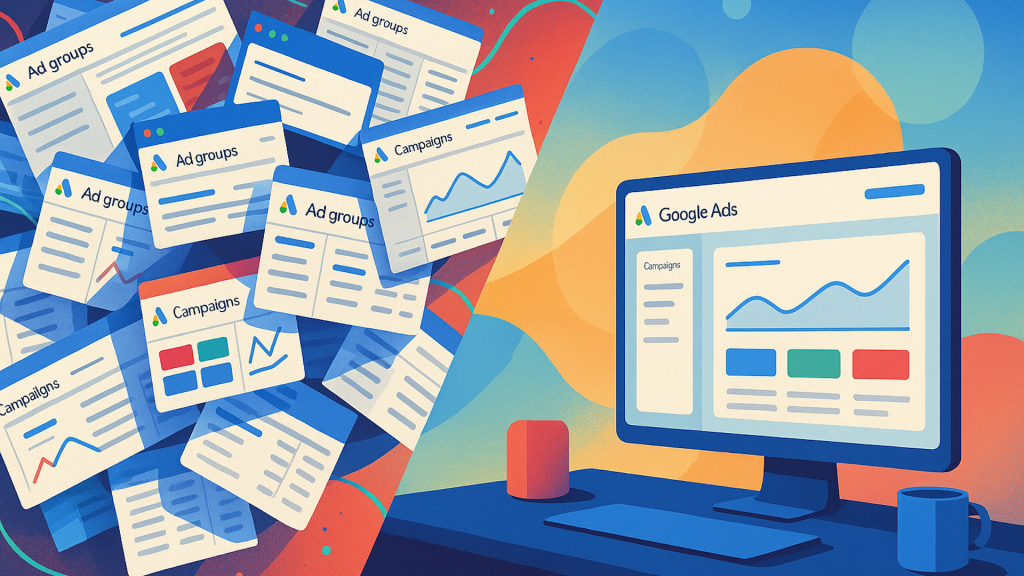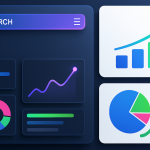How to consolidate legacy SKAGs – and why it’s time to move on

The Alpha Beta account structure was the gold standard of paid search.
Over the past several years, PPC marketers have adapted to Google’s push into automation and AI by first tweaking Alpha Beta – built on single keyword ad groups (SKAGs) – and eventually moving away from it altogether.
SKAG maintenance and buildout are no longer ideal for paid search in 2026 and beyond – but that transition isn’t as simple as flipping a switch.
Existing SKAGs still hold valuable data and insights you can carry into a more consolidated setup.
This article covers the benefits of SKAG consolidation and best practices for building a structure that sets your campaigns up for success.
Why consolidate your SKAGs
As a control-loving performance marketer who’s reluctant to let Google’s AI take the reins if I can help it, I understand the appeal of SKAGs.
The precision of custom bidding, tailored ad copy, and specific landing pages is hard to give up.
The challenge is that “precision” isn’t what it used to be.
With Google’s looser match types, we have to accept that controlling every query – even the highest-converting ones – is no longer possible.
At the same time, Google now rewards data density and streamlined account structures.
Its interface makes consolidation easier, and its algorithms improve faster when fed with more robust data.
While results will vary, it’s reasonable to expect a modest lift in efficiency – around 10% – when consolidation is done right.
The controls that still matter lie elsewhere:
- Enhanced conversions.
- Strategic use of offline conversion tracking (OCT).
- Negative keywords.
- Ad copy that reflects a deep understanding of the user.
I’ve found it’s a far better use of my team’s time to optimize with those levers – and to strengthen tracking and measurement both within Google and across channels.
That focus delivers far more value than the manual, time-consuming process of SKAG buildout and maintenance.
If you consolidate your SKAGs effectively, it’s very possible you won’t suffer the initial drop in performance we’re all used to seeing from major account restructures.
At my agency, we’ve managed to consolidate a range of accounts without seeing a big negative impact – and from there, the data density feeding the algorithm can get to work.
Dig deeper: When to restructure your Google Ads account – and how to do it right
Best practices for SKAG consolidation
To make consolidation work, focus on building a structure that balances data density with control.
Avoid over-segmentation
Remember: Google’s algorithm likes data density.
Transitioning from SKAGs to two-keyword ad groups won’t accomplish much, and we still inherit accounts with hundreds of ad groups that need further consolidation.
Sprawling, over-segmented set-ups lead to very concrete issues:
- Inefficient budget allocation across campaigns.
- Data cannibalization and reduced visibility into true performance.
- Time-intensive management that slows optimization and reporting.
- Gaps in ad coverage and messaging consistency.
Consolidation saves significant time you can redirect toward higher-impact work – and it’s also shown real business gains.
In one SaaS account we took over and began consolidating in June, efficiency in cost per opportunity improved by 6% in the first month and 27% in the second, while maintaining opportunity volume.
Those gains can’t be explained by seasonality.
Dig deeper: 7 PPC mistakes hiding in your ad accounts
Avoid over-consolidation
We also take over accounts with hundreds – sometimes thousands – of keywords in a single ad group.
That setup often leads ads to serve for irrelevant queries and gives Google far too much freedom to prioritize its own revenue over yours (more on that below).
Over-consolidating also limits the insights you can draw from performance.
For example, if you group dissimilar geos – states, countries, or regions – in the same ad group, you’ll lose visibility into which areas drive efficient growth and which drain budget without meaningful return.
Get the newsletter search marketers rely on.
See terms.
Segment strategically (don’t give Google any loopholes)
Google is masterful at finding the path of least resistance to hit your goals – and too often, that works against your bottom line.
When consolidating, avoid these common pitfalls.
Clumping brand and non-brand keywords
- Google will serve branded queries all day because those users are already deep in the funnel and likely to convert. But those conversions are also the least incremental.
- Keep brand and non-brand separate and make Google work harder to convert people who don’t already know your brand.
Clumping products with widely different price points
- Give Google a tCPA target and a mix of products at different price points, and it’ll go straight for the easiest – usually lowest-priced – conversions.
- Using tROAS helps a bit, but it’s better to group products with similar price points so you don’t give Google unnecessary flexibility.
Clumping keywords without considering lead quality
- If you’re using enhanced conversions and OCT, you already know which keywords drive higher-quality leads.
- Don’t undermine that by mixing low- and high-quality keywords in the same ad group. Google will fill your funnel with cheap, low-value leads.
- Instead, balance volume and quality in high-value ad groups by:
- Setting a realistic volume target (around 20-30 per month).
- Optimizing toward the deepest-funnel action that supports that level – like SQLs or opportunities.
Use negative keywords
Consolidated ad groups open the door to plenty of irrelevant queries, so be aggressive with negative keywords.
You’ll never catch every search, but think directionally and aim for broad coverage to protect your budget from waste.
Beyond performance: Why consolidation really matters
You’ll likely – though not certainly – see a modest performance lift if you consolidate effectively. But that’s not the main benefit.
The real value lies in the time you save by building a simpler structure and letting Google’s algorithm do its job – and in clearing the mental hurdle of giving up query-level control to focus on smarter ways to differentiate your campaigns.










Recent Comments